With it's beautiful emerald green color, crisp and refreshing texture, with delicious, mild, and faintly nutty taste and smell, Celtuce is the best vegetable you're not eating.
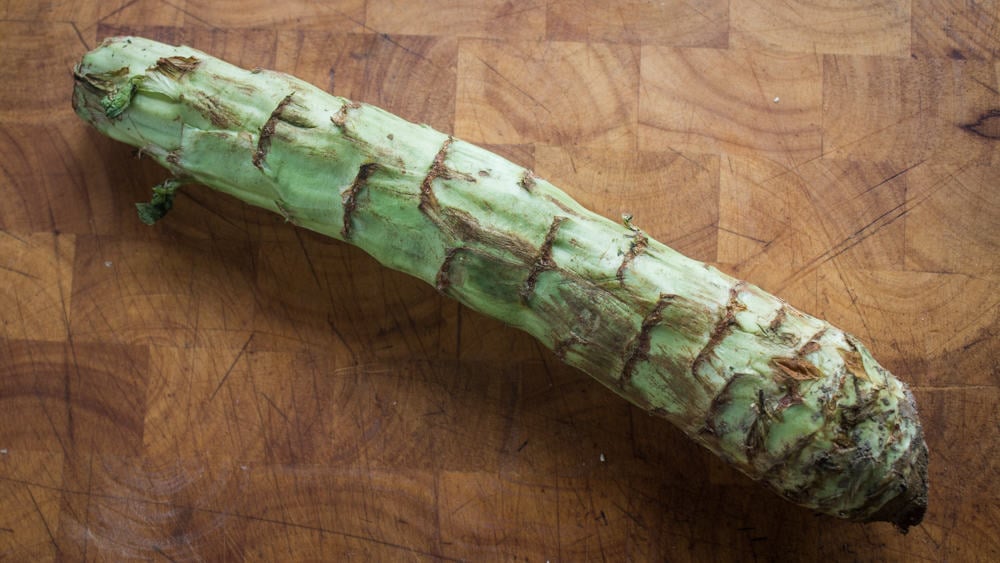
What the heck is it? Well, besides from resembling a strange green wand, often with runty little lettuce leaves on top, celtuce is what I'd describe as a stem vegetable, a type of food that we're not used to eating in the U.S..
I learned about celtuce from Chef Michel Bras (his cook book is old school, and probably the most valuable as a reference for professional chefs) but it's most commonly known in asian cuisine.
Basically, celtuce is indeed a type of lettuce, but, instead of the lettuce being grown for it's leaves, the stem is harvested and cooked instead. The leaves are edible too, but as celtuce often has quite a journey to get to specialty grocery stores and ethnic markets, the leaves will usually be wilted and unattractive by the time the get to market.
If you're wondering why you've never seen it, it's probably because this stuff can be hard to find, especially if you shop at American grocery stores.
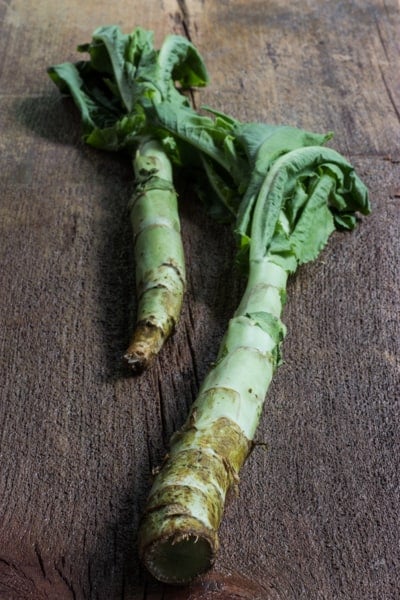
Find celtuce at an Asian grocery store
Americans, as a general rule, don't have an appreciation for vegetables compared to many other cultures around the world.
To get exposed to some new, exciting ingredients, take a trip to a local Asian market. You'll find the vegetables lack a homogenous quality, and, are generally super cheap. A cheap price for veggies does not insinuate a lack of quality, but thats another story.
All their veggies are subject to the same inspection as other U.S. grocery stores. I shop at Asian markets for most of my vegetables (not meat though) and have never had a problem, just be choosy like you would anywhere else.
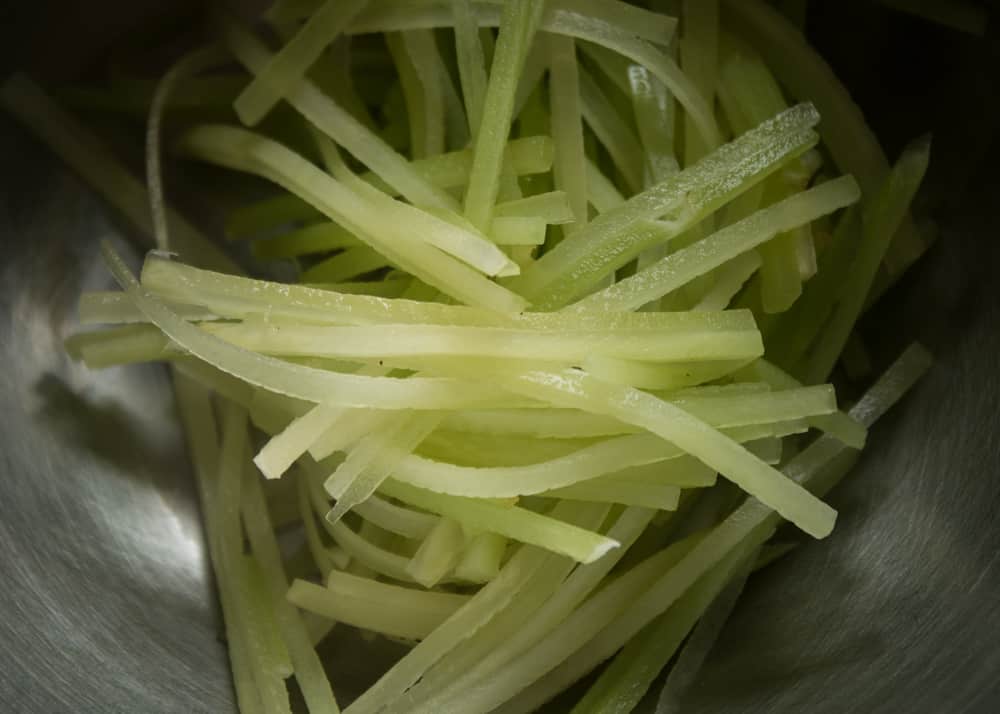
Bitter Celtuce
One year, I bought celtuce from an adventurous farmer in Wisconsin. The celtuce looked exactly like the stuff I purchased from the asian market, but, eaten raw, it was intensely bitter.
After cooking though, it had a superior flavor to the asian market celtuce, a bit like toasted sunflower seeds or creamy nuts. I haven't tasted a variety with a similar flavor since.
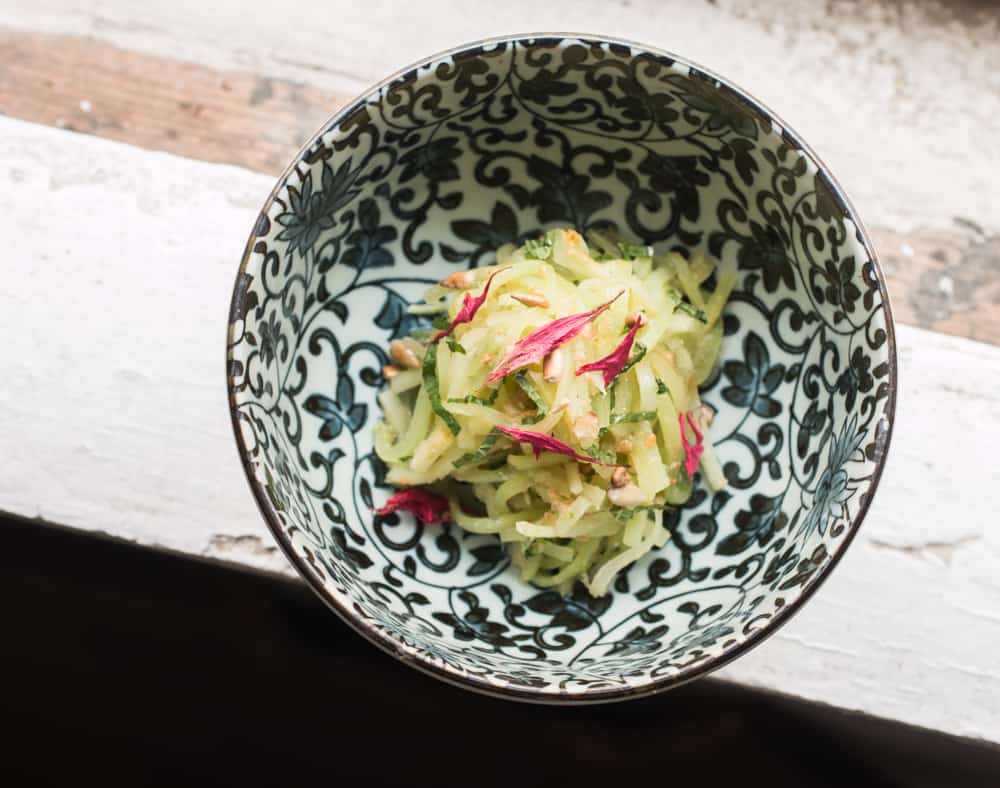
How to peel and cook
Preparing this stuff is easy, but know that the outer skin is tough, and you'll struggle to peel it without a quality peeler. After you peel it, you'll need to peel it again to get underneath the fibers that lie under the skin to reveal the beautiful, jewel-colored heart.
You can also just cut it into sections with a sharp paring knife, and make it square, which makes the cutting and shaving on a mandoline I'm going to describe for you is really easy.
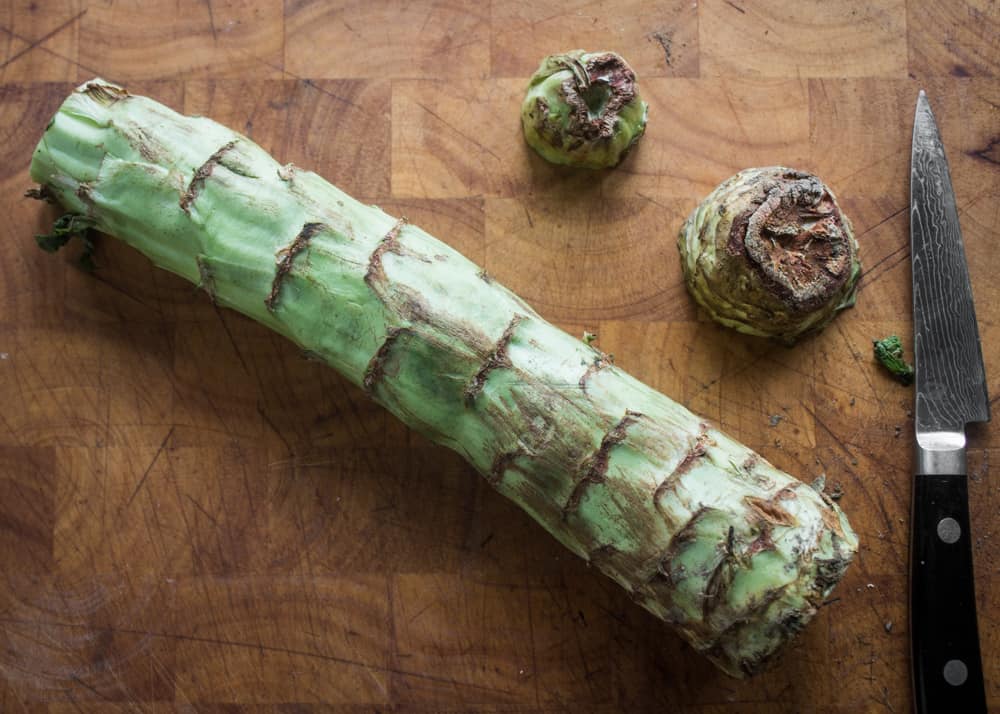
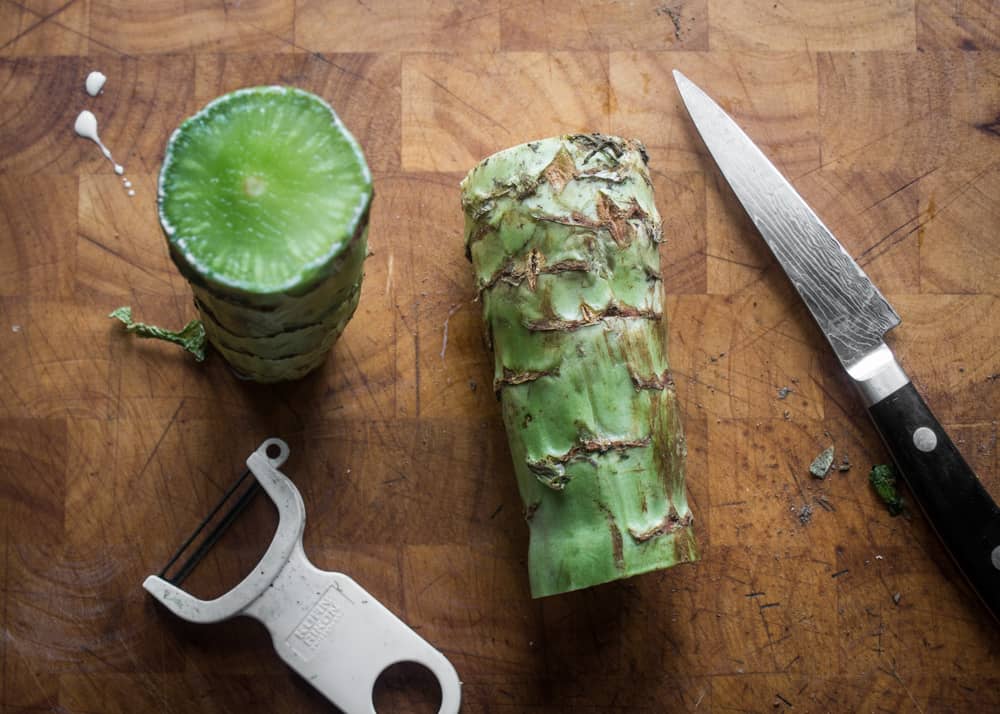
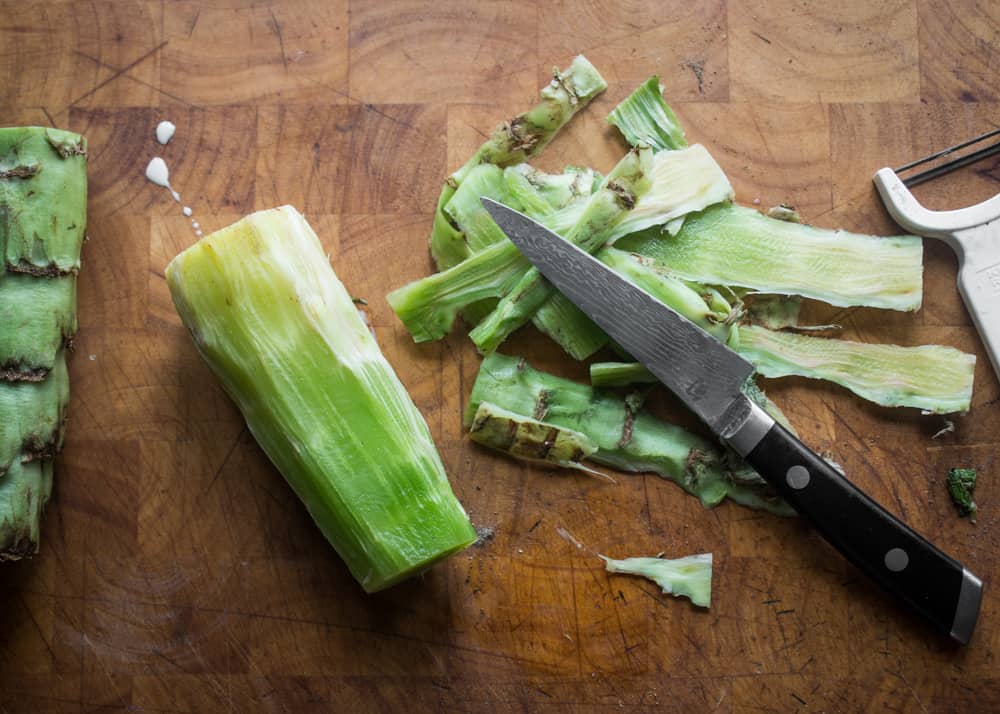
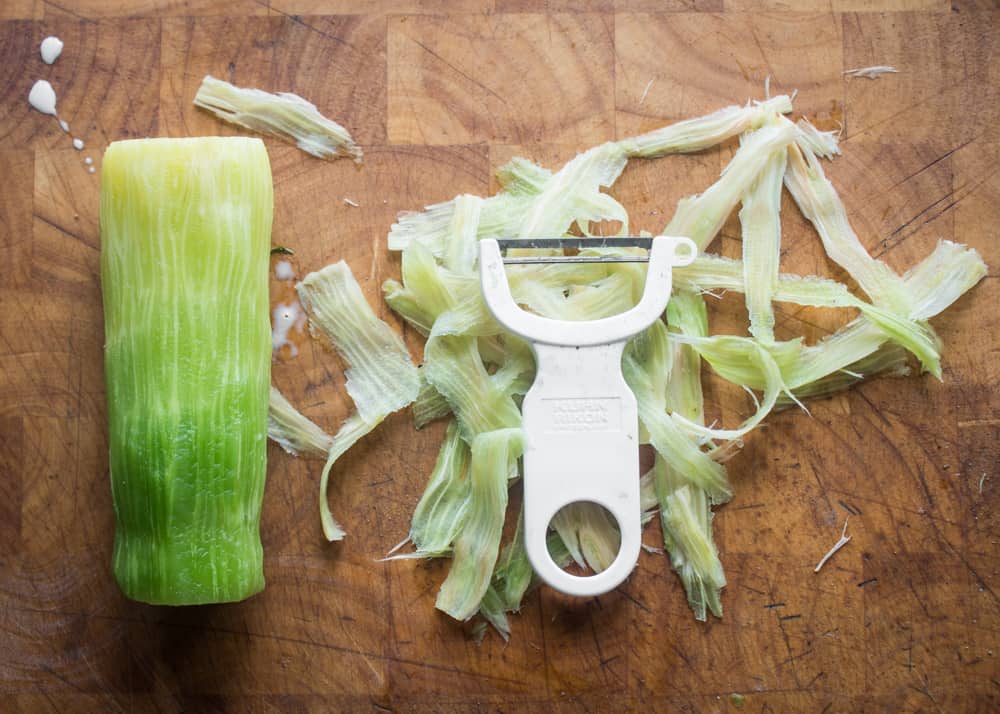
Three easy techniques: shaved, julienned, and peeled
Shaved
Shaving is the most even, and also the first step of a nice julienne, or matchstick cut. To make it easier, you can cut the celtuce stalk into a rectangle for perfect square sides, if you like.
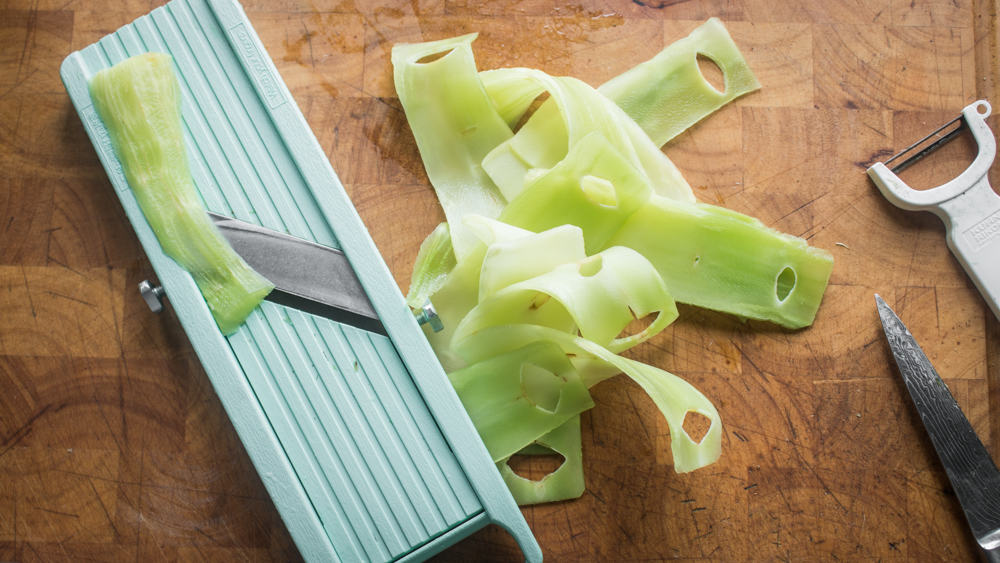
Julienned
After you shave the celtuce on a mandoline, you can cut them into lengths of a few inches, stack the slices together, and cut into matchsticks as fine as you like. The finer the julienne, the more delicate the texture will be.
This is a great beginning for a cole-slaw, but don't even think about adding mayonnaise to it!

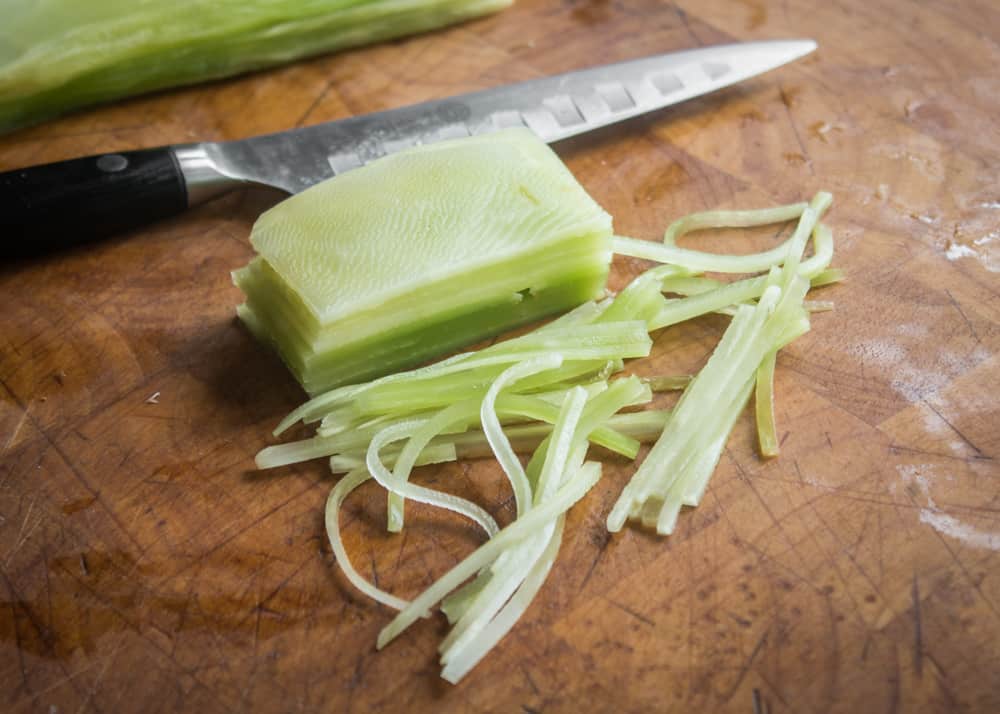
Peeled
This is the easiest way to make a shaved celtuce salad, which could also double as chilled vegetable noodles. Cut the celtuce into manageable lengths, then sqaure them off, and use a vegetable peeler to make paper-thin ribbons.
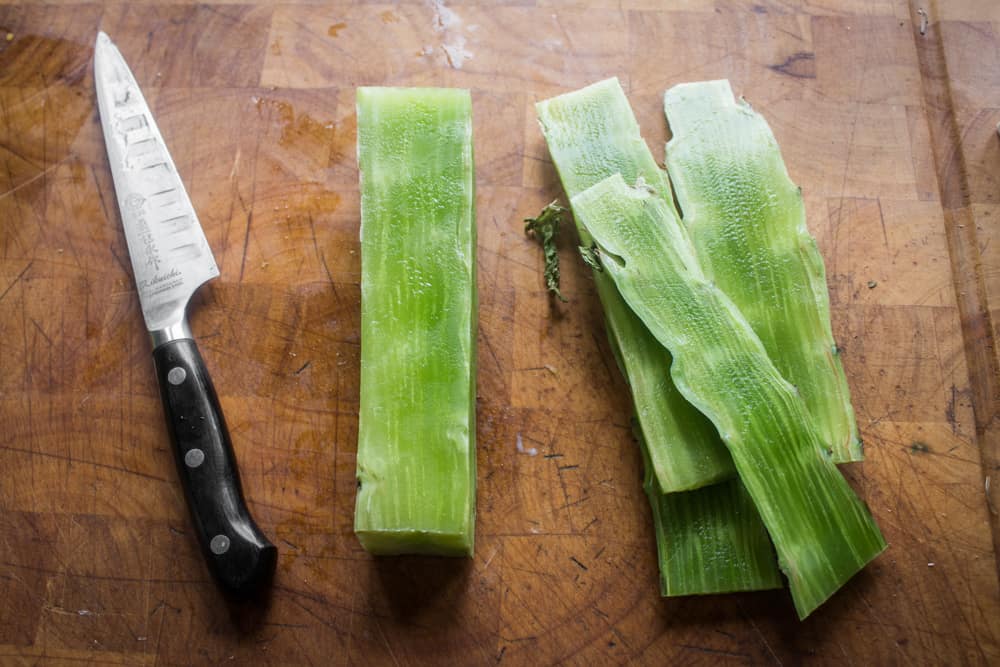
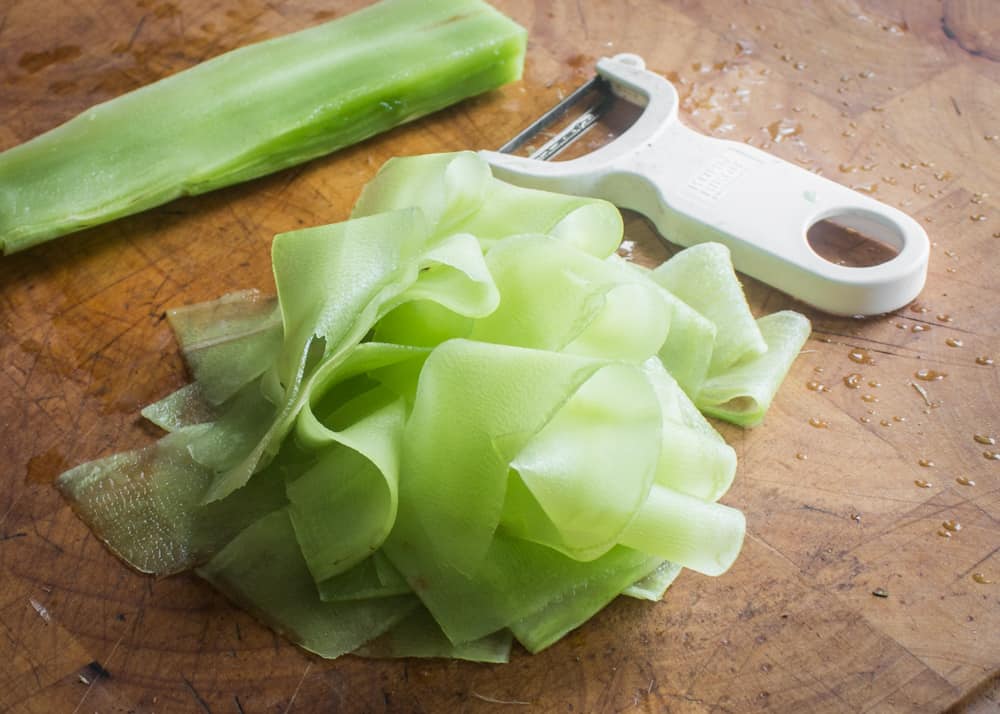
Recipes
The best thing you can do to taste celtuce's sutble, slightly nutty taste is to do as little as possible to it, season it lightly, and don't get too creative.
Also, some sources online might suggest soaking cut celtuce in water to make it crisp, but this will ruin and dilute the flavor, leaving you with a crisp, but watery, bland finished product. For inspiration, look to China, and other vegetables with a similar texture. For example, you could use celtuce anywhere you'd use the following vegetables:
- Kohlrabi
- Cucumbers
- Celery
- Radishes
For flavor pairings, think cool, refreshing, and cold preparations. Celtuce would love to be shaved into a vegetable slaw, or quickly tossed with a light, oil-based dressing, and a dash of something sweet. The first time I worked with it, I thought it smelled a bit like sunflower seeds, so I used that as my inspiration.
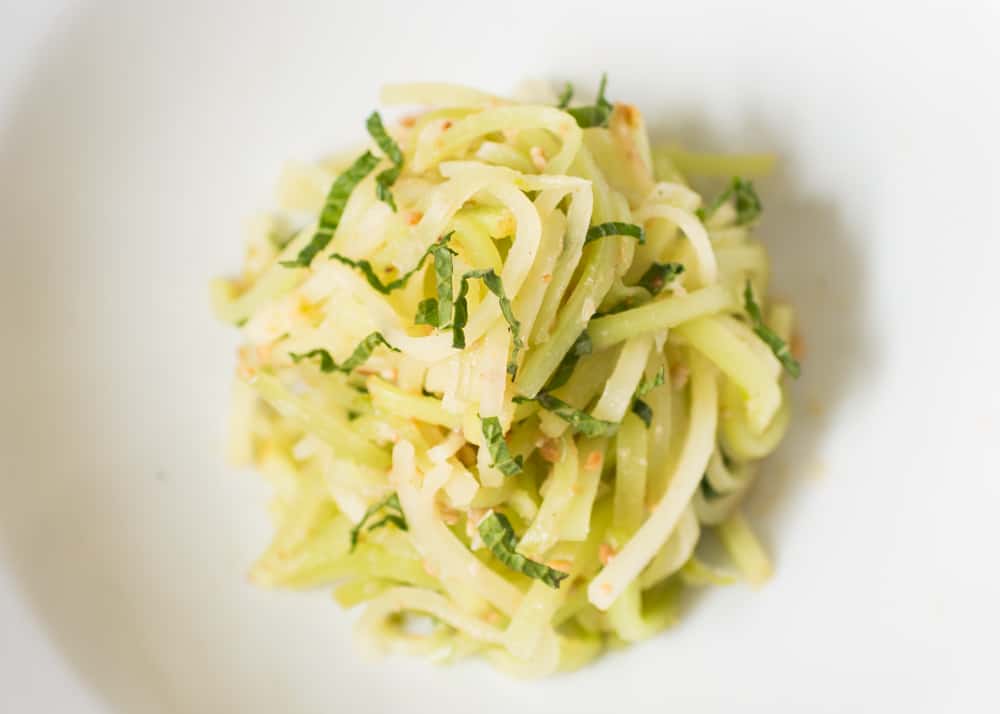
Traditionally you might see celtuce paired with sesame, and that's great too, but as sesame is stronger tasting than sunflower seeds, you won't taste the natural flavor as much, which isn't necessarily a bad thing.
My favorite prep for these so far is a fine julienne, seasoned with a paste of sunflower seeds, a touch of maple sugar, and virgin sunflower oil, similar to Japanese gomae made with spinach.
Celtuce Salad with Sunflower Dressing and Mint
Ingredients
- 8 ounces julienned celtuce see my tutorial for how to do this
- ½ cup raw unsalted sunflower seeds
- 4 tablespoons Smudes sunflower oil or substitute toasted sesame oil, or another nut oil, like walnut
- 1 tablespoon maple syrup or maple sugar or a sweetener of your choice
- 1 tablespoon champagne or apple cider vinegar
- Kosher salt to taste
- A few leaves of finely sliced fresh spearmint
Instructions
- Toast the sunflower seeds, then pound in a mortar and pestle or food processor, drizzling in the maple, vinegar, and then the oil to make a paste.
- Toss the paste with the celtuce, mix in the mint leaves, double check the seasoning for salt and acid, and serve.

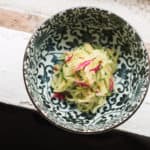
Hank
Hi, I ran across this at my Asian store. Although I a m Chinese and very familiar with Asian cuisine, I’ve never seen Celtice before, so I thought I’d try it. After getting some tips from a Chinese gentleman at the store, I peeled it and cut the stems on the bias about 1/8 inch thick. Then I sautéed them with the leaves at high heat in a wok with a little salt and a touch of chicken powder, about 1/2 teaspoon each. After it looked cooked, some edges were a little seared, it was done. I did not add water nor anything else. It was delicious. I don’t think any additions, garlic, etc., will improve it.
Gerard
I don’t peel the lettuce stems. I cut in 1/4 inch slices, sauté with chili flakes, minced garlic and salt in canola oil. The slices don’t brown much but pick up the flavors and aromas. I then put in a bowl and bake for 45 minutes at 250 degrees,
As an aside, the stem slices would be very effective in sinigang (the tamarind version).
Brett
It's very easy to grow at home. The leaves are my favourite part - blanch and then drizzle a tiny amount of soy sauce on top, mix through (soy sauce will be diluted by the water).
Fry with oil, garlic, salt, maybe also a dash of soy.
BBQ over charcoal by spraying with olive oil, sprinkle a bit of any bbq rub (this is common street food in China, usually threaded on a bamboo skewer).
The stem can also be cut into large chunks and eaten in stews/soups not dissimilar to root vegetables. Just don't overcook it.
If growing at home, you can eat the entire thing young, before the stem has developed more than the average lettuce, or you can harvest the largest leaves (which grow fast) while the stem develops much slower. Leave one to go to seed and harvest the seeds late summer/autumn - you'll get enough to last you for years to come.
Kathy
I just grew some, it was as easy to grow as lettuce, so far I 've just been peeling and and eating it, will definitely grow again!
Jay
Hey, you can definitely eat celtuce raw. the skin and white sap are bitter, but if you peel it far enough back, its sweet and mild
Alan Bergo
The celtuce I buy at the Asian market is definitely sweet raw. But the species farmers were growing around here was absolutely, horribly bitter even after peeling. After cooking the flavor of the locally grown stuff was noticeably different: it was intensely nutty after cooking, with a sunflower or aster-esque flavor, not mild and near innert like the Asian market variety.
Minyassa
I've been browsing celtuce articles for about an hour here and right before I found yours I found one that mentioned that all the sweetness is at the outside of the stalk or even in the skin. So it may be that peeling it makes it more bitter, because the bitterness is concentrated at the center. I'll be testing that when I can get my hands on some! Your recipe looks pretty darn good. 🙂
Dave Dave
Living in China, this stuff can be found just about anywhere. A few more preparation suggestions:
As you noted, the flavor of Celtuce is unique and really tasty. Simply cutting it into quarter-inch-or-less-thick slices and stir-frying in your favorite high-temperature cooking oil with some salt is good enough. If it seems at risk of burning, add some water and put a lid on the wok.
If that's too bland, doing the above and adding some garam masala to the mix, plus a dash of brown Chinese vinegar can add some flavor.
Finally, you can cut it into long, thin strips, mince some green onions and garlic, and toss them all together. Then, flash-fry some sichuan peppercorn in hot peanut oil. Then, once the sichuan peppercorn's fragrance reaches your nose, take it off the heat and dump the peppercorn and peanut oil over the celtuce/onion/garlic mix.
I rarely prefer celtuce any more heavily than that, given it's already very healthy and it's not a vegetable that gets much better if you add more to it.
Alan Bergo
Hi Dave, these are some great suggestions! Thanks for chiming in.
Sam Schaperow
Interesting. Alan, let me suggest something, then: If you find a wild lettuce w/a thick stalk that's got a bitter but edible core (so maybe not too old but still growing), try treating it as you did celtuce. I wonder if it would come out very similar.
Sam Schaperow, M.S.
PsychologyCT.com
http://groups.yahoo.com/group/plantforagers
http://groups.yahoo.com/group/mushroomtalk
Alan Bergo
Hi Sam, good to have you back. I don't personally know of any wild lettuce that would have a stem similar to celtuce, but I definitely dig your idea. It is so interesting how this plant changes from incredibly bitter to sweet and nutty with nothing more than a bit of cooking.